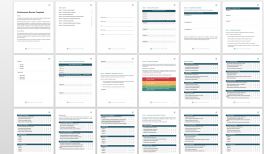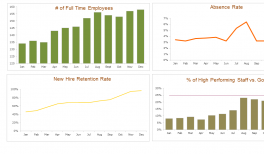In November 2013, Demand Metric conducted a benchmarking study, with 291 respondents, to measure employee engagement, understand the impact of having it, and how it is measured and managed so as to derive best practices.
Employee Engagement Benchmark Report
Resource Overview
Related Resources
Executive Summary
Review any organization that has earned a “best place to work” designation, or one that perennially earns “favorite company” status with a strong base of loyal customers, and you’ll discover a common thread: employees who are highly engaged. The intellectual argument in favor of improving employee engagement is irrefutable. Whatever definition one chooses, having more engaged employees should lead to better performance and a variety of improved business outcomes. Yet in many organizations, employee engagement is not a recognized, serious initiative that is viewed as having a measurable return.
The purpose of this study is to measure employee engagement, understand the impact it is having, and how it is measured and managed so as to derive some best practices to guide all organizations.
This study will reveal what organizations with highly engaged workforces are doing, and the degree of benefit they are getting as a result. This study sought to examine the effects of employee engagement on key performance indicators such as:
- Revenue generation
- Employee retention, productivity, morale and creativity
- Customer loyalty & retention
Table of Contents
- Introduction
- Executive Summary
- Research Methodology
- Employee Engagement Baseline
- The Core of Employee Engagement
- Characteristics of Engaged Employees
- The Impact of Engaged Employees
- Promoting Employee Engagement
- Measuring and Managing Engagement
- The Culture of Engagement
- Analyst Bottom Line
- Acknowledgements
- About Demand Metric
Research Methodology
The Demand Metric 2013 Employee Engagement Survey was administered online during the period of November 8th through November 26th, 2013. During this period, 376 responses were collected, of which 291 were qualified and complete enough for inclusion in the analysis.




